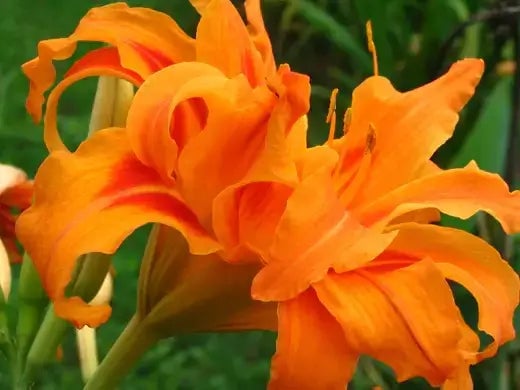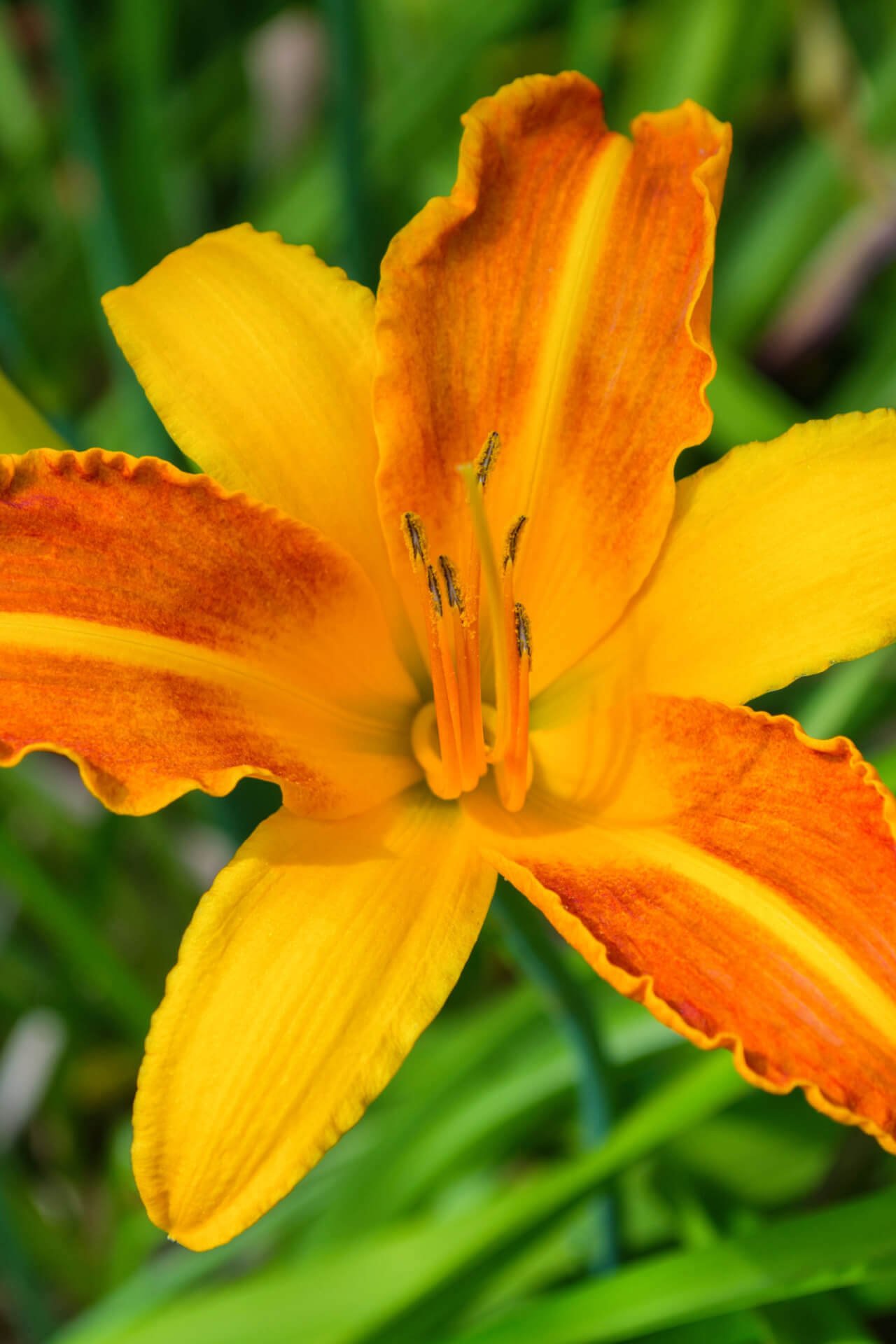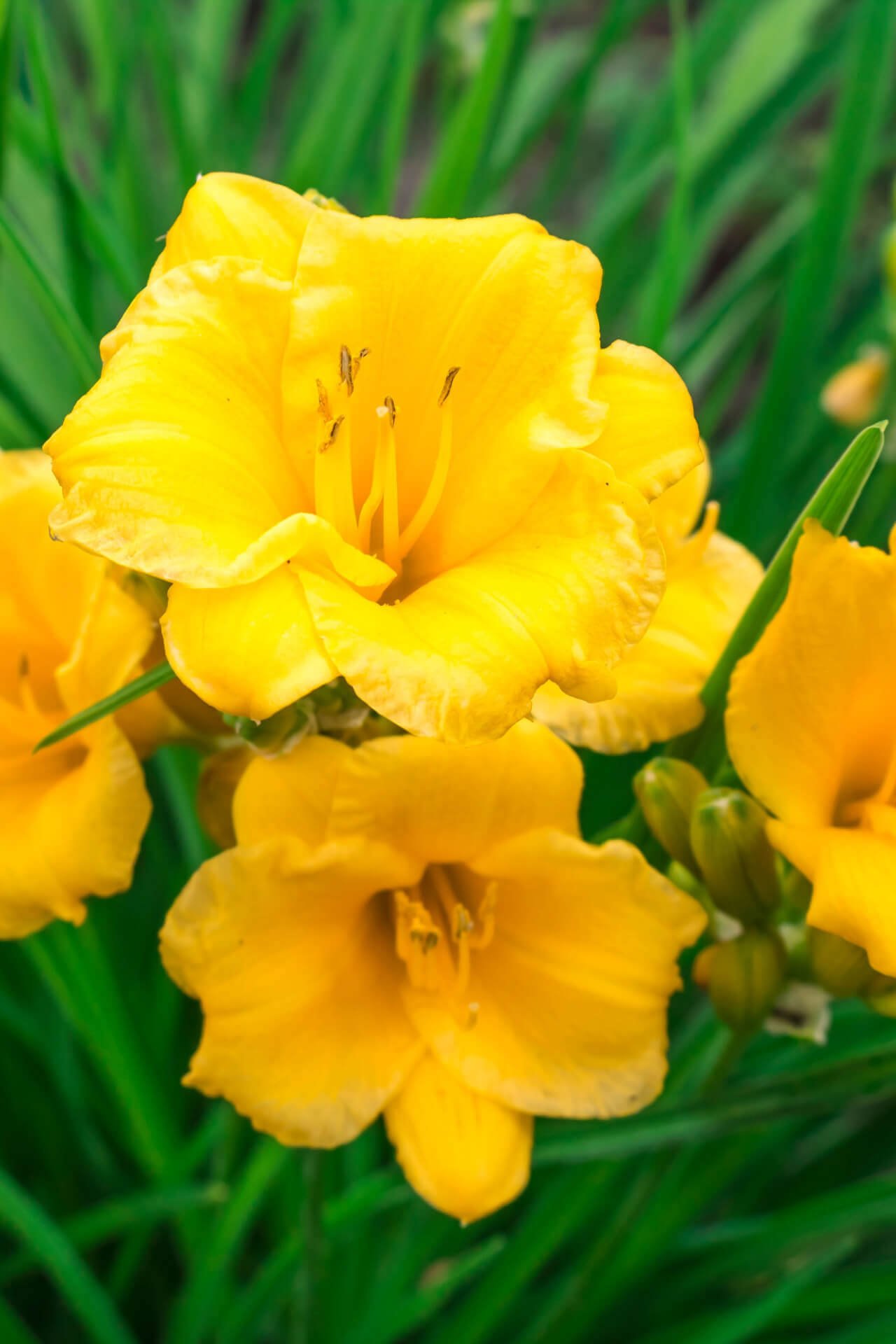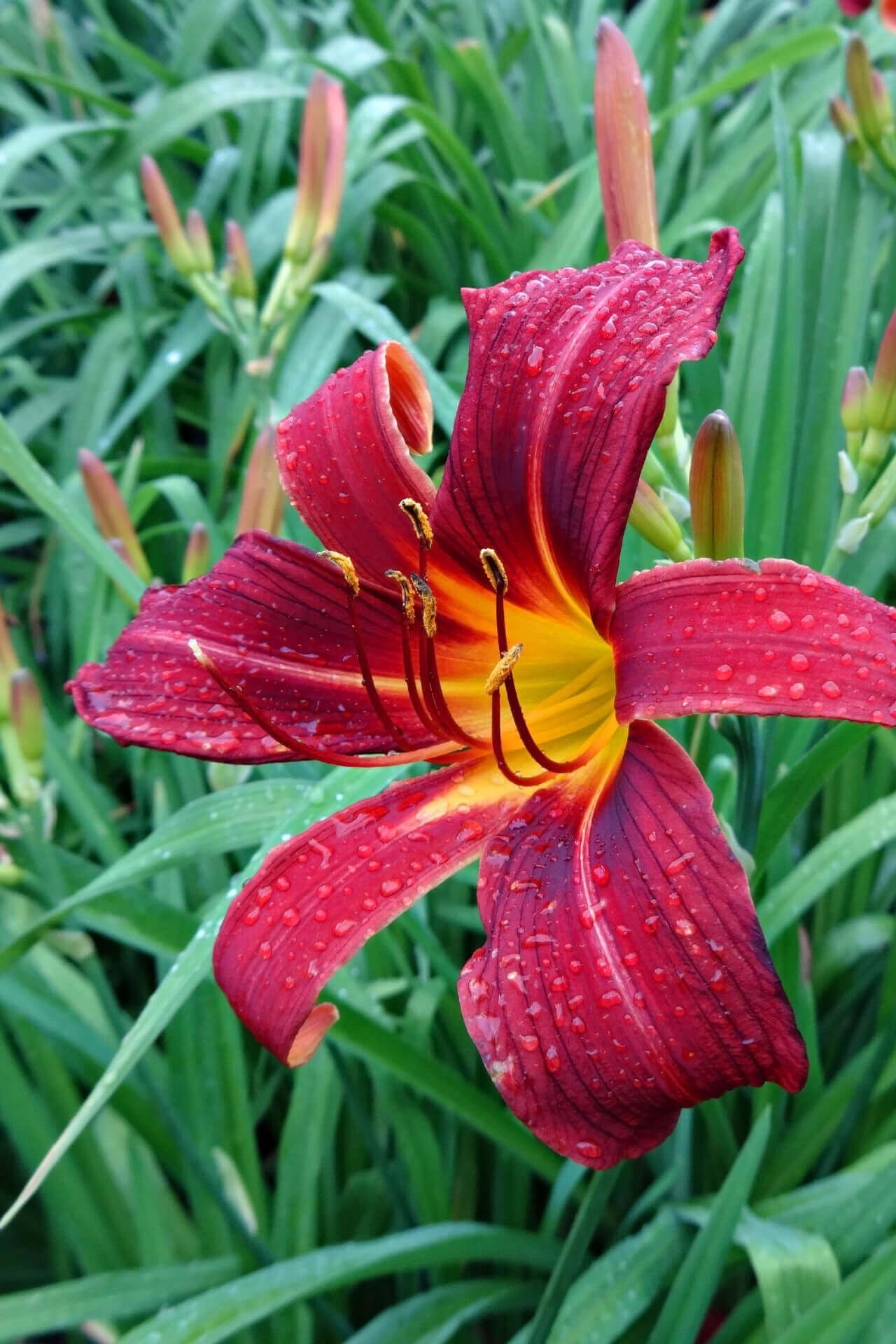TN Nurseries best selling daylilies
3. Red daylily
The Orange Daylily is often considered passe or old-fashioned among modern gardeners and is only rarely offered by many suppliers in the horticulture industry.
Instead, many gardeners and landscapers have gravitated towards hybrid daylilies, which vary significantly in height, color, and blooming period length. But these flowers are shockingly hardy, resistant to many common diseases and pests, and in the end, have often outlived even the original buildings they have been planted around.
They are persistent and long-lived, making them an attractive option for gardeners who suffer harsher conditions and desire relatively maintenance-free plants. Daylilies are fantastic to plant as a summer flower in gardens that tend to get overshot or are plagued by persistent garden pests.
They are also striking when used to add height to a garden and make a lovely contrast to green, mid-height groundcovers or when planted in front of taller shrubs or against a garden wall.
The flowers of Orange Daylilies are relatively large and can span between 3 and 5 inches in width. The throats of these flowers are slightly yellow, with a band of red that fades into lines of red veins crisscrossing the fleshy orange petals. The flowers feature six petals, which roll outward and under the flower, highlighting the long stamens.
When the flowers are budding, they are pale green, only about 3 inches long, and the blooming period starts around mid-summer (typically June). Per the name, each flower will last only a day, with the blooming period lasting only about a month. However, each plant will grow many flowers held at an angle or horizontally from their stalks.
Because the Orange Daylily is a sterile hybrid, it cannot become an invasive species. Orange Daylilies form clumps of clustered stalks and flowers that look attractive and luxurious outside the blooming season. In the non-blooming seasons, the long, leafy fronds of the clumps they make appear like a particularly luxuriant ground cover plant.
Like most perennials, Orange Daylilies prefer full or partial sunlight and loamy, moist, well-drained soil. Orange Daylilies are considered easy to grow, and the rhizome is likely to spread over time slowly through the root.
Do Orange Daylilies sound like a flower to you? TN Nursery maintains excellent quality Orange Daylilies for sale at only the lowest wholesale prices.
Source to Buy Orange Daylilies
Read more
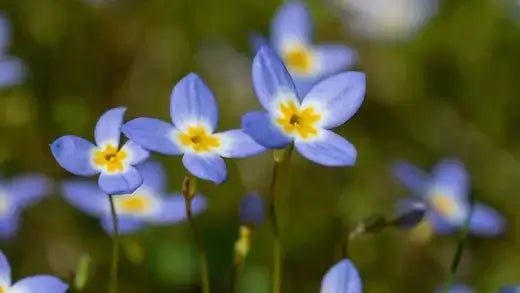
TN Nurseries best selling perennialsAzure bluetsPartridgeberryperiwinklesTrilliumsIrisDayliliesBluets Quaker Ladies- A Delicate Perennial Wildflower Houstonia Caerulea, Bluet plants, Sapphire Blue...
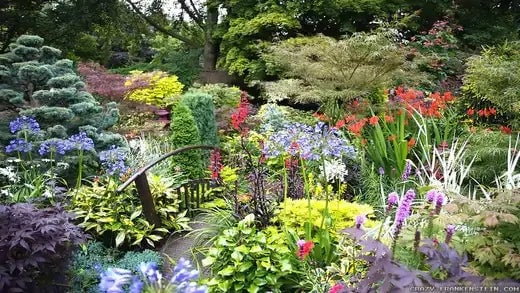
How to Grow a Great Flower GardenTN Nurseries best selling wildflower perennialsTall phloxTrilliumsConeflowerJacobs LadderVirginia bluebellsAster Growing a fantastic garden can be intricate and ti...


